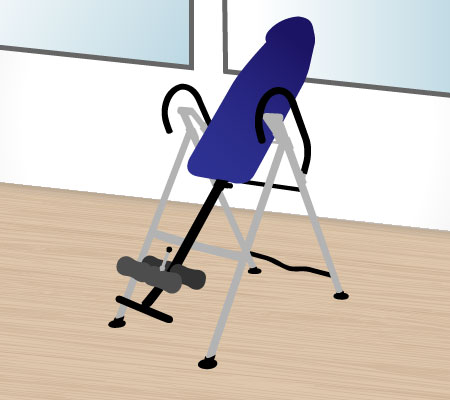Can an Inversion Table Help Back and Hip Pain

An inversion table can be a useful tool for managing low back pain when combined with stretching and strengthening.
If you have low back pain, you may have considered using an inversion table to find relief. The table places your body at a downward angle to decompress your joints.
"I use inversion a fair amount to treat pain," said Dr. James Mullen, a Marshfield Clinic physical medicine and rehabilitation physician. "Inversion provides gentle distraction stretching that creates space between the joints and relieves pressure."
Inversion can help relax muscle spasms and ease low back pain that extends to the legs.
5 tips for using an inversion table safely
If you're young and don't have other health problems besides back pain, you can safely try inversion therapy at home. People who have herniated disks or arthritis in their hips and knees may be more susceptible to injury using an inversion table. Mullen recommends talking to your doctor before trying inversion at home and taking these steps to do it safely.
1. Skip the inversion table if you have uncontrolled high blood pressure or vascular headaches.
Inversion puts extra stress on your blood vessels, which can increase stroke risk if you have cardiovascular problems.
2. Don't lean back too far.
You don't need to be completely upside down to get a good stretch from an inversion table. In fact, leaning back too far can be dangerous. Mullen recommends limiting yourself to a 30- to 35-degree angle, or a 10- to 15-degree angle for older adults.
3. Set the safety strap.
The safety strap prevents you from leaning back too far and getting into a position that makes it hard or painful to turn yourself upright.
4. Don't hang out too long.
"Your joints will be unhappy if you overstretch the connective tissue," Mullen said. Start by using the inversion table once a day for a minute or two. Slowly work your way up to five minutes per session twice a day.
5. Slowly return to an upright position.
Reloading your joints with pressure by returning to an upright position too quickly can cause spasms and make back pain worse, especially if you have a herniated disk.
Stretch and strengthen in addition to inversion
"An inversion table is a useful tool as part of a more expansive pain management program," Mullen said. "By itself, it may not provide as much relief as you hoped."
Your joints still need to learn to work properly when gravity is working against them. Supplement the inversion table with sitting, standing and lying stretches. Pull your knees toward your chest while lying on your back and perform gentle back extensions while lying on your stomach to stretch and strengthen your low back.
Related Shine365 posts
Back pain: When to seek care
Disk-function: Dealing with a herniated disk
Relief from sciatica is possible
Help prevent back pain with one easy stretch
About The Team

Bone and Joint Care Team
Our team wants to help you stay active. We'll provide ways to manage pain and stiffness and prevent overuse, trauma and sports injuries to your bones, joints and muscles. We'll also share the latest treatment information including total joint replacement and reconstruction.
Can an Inversion Table Help Back and Hip Pain
Source: https://shine365.marshfieldclinic.org/bone-joint/inversion-tables/
0 Response to "Can an Inversion Table Help Back and Hip Pain"
Post a Comment